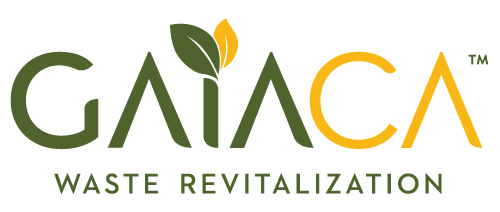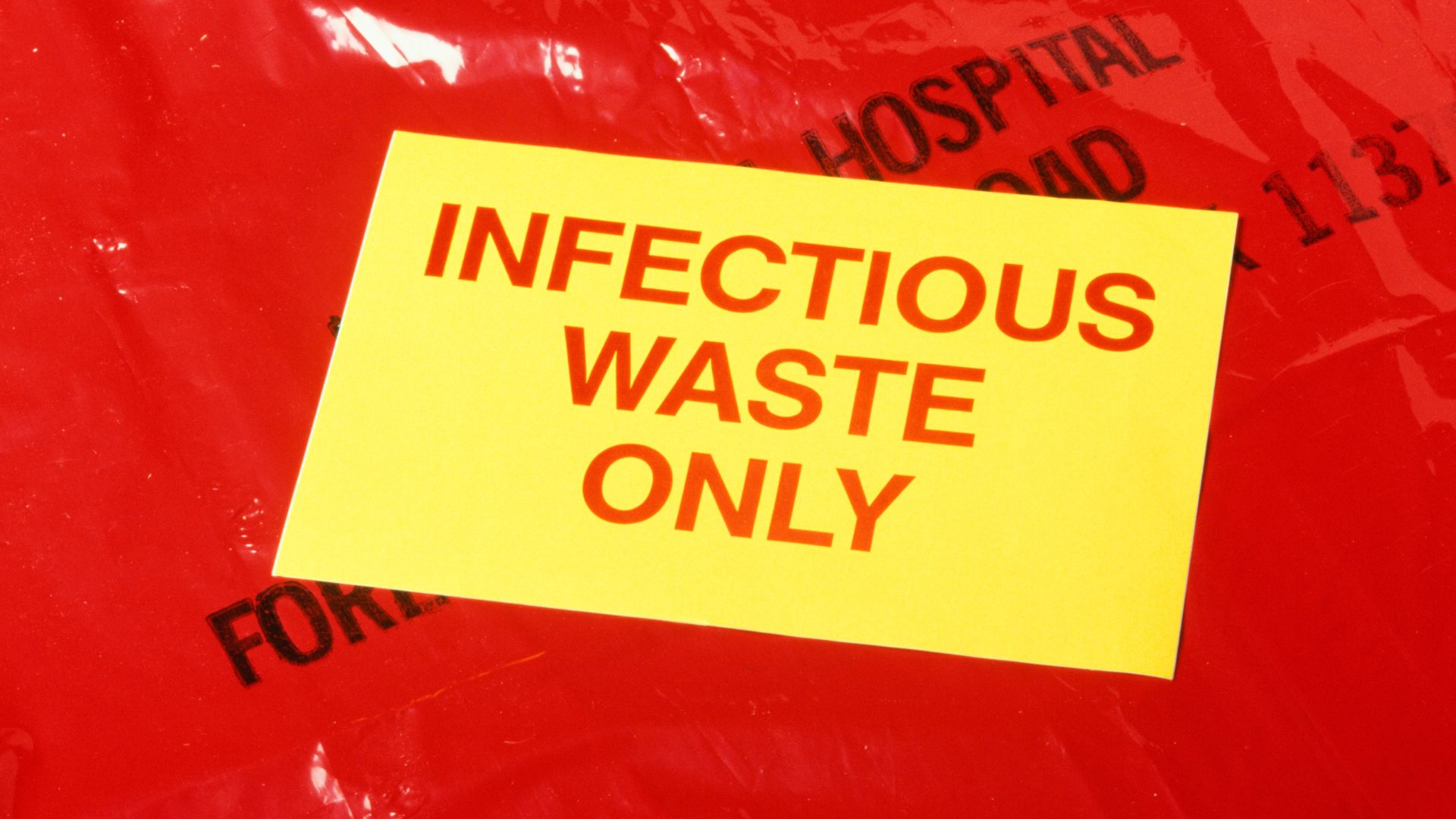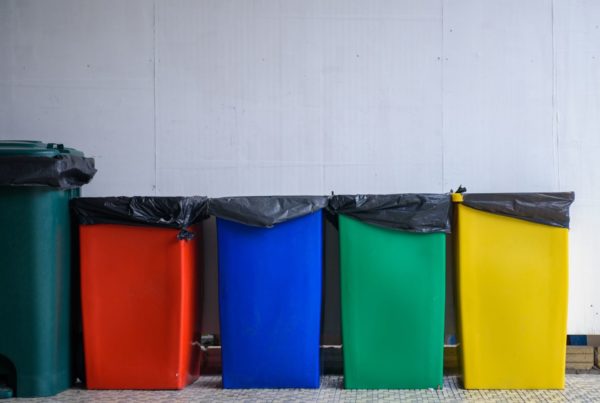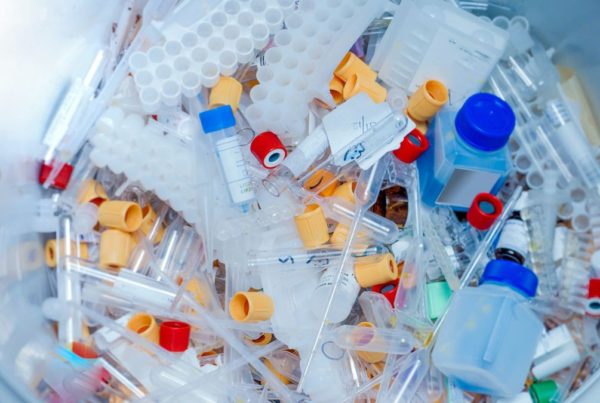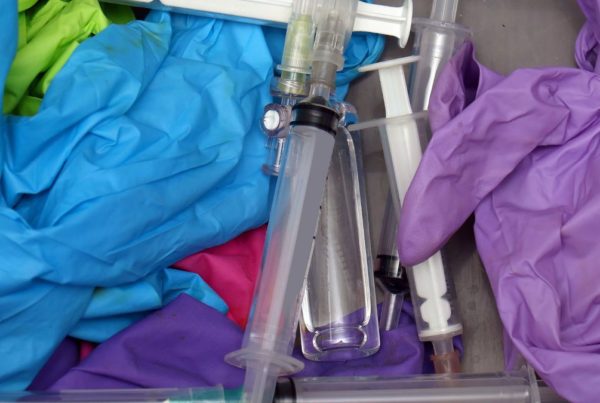Many health-related facilities—including hospitals, nursing homes, laboratories, research facilities, veterinary clinics, blood banks, funeral homes, and tattoo parlors—produce infectious waste, and a lack of clarity about what constitutes infectious waste (and what doesn’t) often leads to other solid wastes being placed in the waste bin inappropriately.
To help businesses and individuals understand infectious waste, we’ve put together a guide covering definitions, examples, and correct disposal.
Definitions of Infectious Waste
The concept of infectious waste, also referred to as biohazard waste or biohazardous waste, is defined by the CDC as something that has “a sufficient potential risk of causing infection during handling and disposal and for which some precautions likely are prudent.”
To be considered infectious waste, a solid waste product actually needs to have the potential to transmit disease to a human or animal, so hair cuttings or clipped fingernails, for example, don’t need to be included with this kind of waste.
Infectious Waste vs. Medical Waste
While infectious waste enters into the definition of medical waste or healthcare waste, not all medical waste is infectious. Healthcare wastes cover a broad spectrum of waste streams, including infectious and pathological waste, hazardous waste, radioactive waste, pharmaceutical waste, cytotoxic waste, and regular waste.
Aside from infectious waste like blood and pathological waste such as body parts—which could carry an infectious disease—the other kinds of medical waste (while they might be dangerous) are not infectious.
Examples of Infectious Wastes
The exact inclusions in the category vary from state to state. However, waste products typically considered to be infectious include:
- Blood and blood products, including plasma and serum
- Regulated human body fluids, including amniotic fluid, cerebrospinal fluid, synovial fluid, pleural fluid, pericardial fluid, peritoneal fluid, and genital fluids and secretions
- Contaminated sharps waste, including needles, pipettes, disposable medical devices, lancets, used scalpels, and glass laboratory slides
- Discarded diagnostic samples
- Pathological waste, including human tissues and body parts and contaminated animal carcasses
- Cultures and stocks of infectious agents
- Vaccine waste, especially that which contains a live or attenuated virus
- Solid waste contaminated with any of the above, especially if it’s soaked in an infectious fluid, or the fluid is dripping out, can be squeezed out, or could flake off
A note about teeth: According to the Occupational Health and Safety Administration’s Bloodborne Pathogen Standard, “saliva in dental procedures” is on the list of potentially infectious materials, and may be present on extracted teeth. However, as state laws tend to vary regarding the exact classification of teeth, dentists and dental assistants should check before putting teeth in either the regular or infectious waste bin.
Non-Examples of Infectious Waste
As mentioned earlier, medical waste covers a wide spectrum of waste types apart from things that could transmit infectious diseases. It’s important to remember that many of these waste streams present other health hazards and need to be handled and disposed of correctly.
Hazardous Waste
This category includes any substance that presents a risk of serious harm to people and the environment. Hazardous wastes can be ignitable, corrosive, reactive, or toxic, and cover all of the other (non-infectious) types of regulated medical waste:
Chemical Waste
Class 8 hazardous materials such as formaldehyde are used in hospital-grade cleaning products and can cause irritation to the eyes, nose, and throat. Additionally, incompatible chemicals such as chlorine and ammonia can react, producing toxic fumes or explosions.
Heavy Metals
Heavy metals such as mercury used in thermometers and blood pressure devices are toxic if released into the environment. Around 75,000 newborns may be at a higher risk of learning disabilities due to in-utero exposure to methylmercury each year in the United States.
Pharmaceutical Waste
Pharmaceutical waste, including expired, recalled, and partially used medicines could pose a risk to humans and animals if ingested accidentally or incorrectly.
Chemotherapy Waste
Chemotherapy agents are cytotoxic, meaning that they damage and kill living cells. This is why doctors wear personal protective equipment when administering chemotherapy treatments.
Radioactive Waste
Radioactive waste, such as radioactive diagnostic material contaminated with radionuclides, can cause damage to biological tissues. Sufficient exposure to radiation can cause permanent disability and death.
Dual Waste
Some kinds of waste produced involve two or more characteristics and require special handling. For example, a blood sample analyzed in a lab may have been mixed with mercury. The resulting mixture is then both an infectious waste and a hazardous waste and will need to be stored and treated separately.
Dual waste is also an issue in the cannabis industry, where residue from an extraction facility may contain cannabis (a regulated special waste) and butane (a hazardous waste). Cannabis extraction labs generally utilize specialized hazardous cannabis waste management services to make sure each waste product is disposed of properly.
Regular Waste
It might seem like most healthcare waste is either infectious or hazardous, but according to research from the World Health Organization, around 85% of hospital waste is as innocuous as domestic waste. This 85% includes things like dust swept off the floor, disposable diapers, and paper towels used for cleaning, as well as recyclable goods like coffee cups, shredded paper, and plastic product packaging. Regular waste should be kept separate from infectious and hazardous waste to avoid inflating your hazardous waste management bill.
How to Dispose of Infectious Waste
If your facility’s activities generate infectious waste, you will need appropriately color-coded and labeled containers for collecting and storing this waste. Generally, this will include:
- Red bins and semi-rigid bags with a biohazard label for untreated infectious wastes
- Yellow pathological waste bins with biohazard labels for anatomical waste, including human tissues, body parts, and animal carcasses
- Blue-coded cardboard boxes for contaminated glass waste
- White (translucent) puncture-resistant containers for contaminated sharps waste
- Several separate hazardous waste containers for accumulating the different types of hazardous wastes—including radioactive waste—labeled with the waste type and accumulation start date and kept in secondary containment
- Dual-hazard waste bins for waste that is both infectious and hazardous
- Secure containers for expired medicines that will be treated using methods other than incineration
Once you have the appropriate containers, place them in each room or area of the facility that generates these kinds of waste. Once full, store sealed bags of infectious waste in a secure area until a licensed waste transporter can take them to the appropriate processing facilities. Hazardous waste will need to be picked up by a hazardous waste disposal company for transportation and treatment.
Important: It’s essential to keep waste streams separate when disposing and consolidating healthcare waste. Each waste type requires different treatment techniques for recovery, recycling, or final disposal.
How Infectious Waste Is Treated
The way infectious waste is treated depends on the nature of the waste itself and whether any part of it can be recovered, recycled, or safely buried in a landfill.
- Infectious waste like the plastic part of a needle used for a blood draw is typically heat-treated with a process like autoclaving (steam sterilization) to render it non-infectious. The treated waste can then be recycled or disposed of in a regular landfill.
- Contaminated sharps waste is also heat-treated to kill viruses and pathogens, then processed mechanically to prevent needlestick injuries. Sharps that contain trace chemotherapy waste have to be incinerated rather than steam-sterilized.
- Pathological waste is typically incinerated. Chemotherapy waste can be disposed of together with anatomical waste because destruction in medical waste incinerators is the safest way to deactivate cytotoxic chemotherapy agents.
- Blood or body fluids suctioned during surgery can often be directed to the sanitary sewer system (check local and state laws).
- Dual waste will need to be sent to a facility that can handle both types of waste present in the material, such as infectious and hazardous waste, and treated according to the contents.
A note about the on-site treatment of infectious waste: Some healthcare facilities have their own heat-treatment facility, medical waste shredder, or medical incinerator on-site. After sterilization, treated infectious waste can be added to the regular waste and transported for recycling or burial in a landfill.
Disposing of Household Infectious Waste
While healthcare facilities are regulated by medical and hazardous waste laws, infectious waste produced at home isn’t subject to regulation. Generally, household infectious waste can simply be double-bagged before placing it in the trash to avoid exposing janitors and disposal workers to pathogens.
If you have things like contaminated sharps that you can’t put in the regular trash, public school health centers and community sharps collection centers often accept infectious waste, including used needles and lancets.
Infectious Waste Management Laws Vary from State to State
While there are some aspects of infectious waste management that are similar around the country and even around the world, it’s important to note that each state has its own definitions and regulations for handling infectious waste.
For example, some states group contaminated waste products by the level of potential risk, have specific policies for materials that came into contact with specific infectious diseases (like monkeypox or SARS-COVID-2), or regulate substances—particularly hazardous materials—that aren’t regulated at the federal level.
When developing an infectious and hazardous waste management plan, you should consult with the relevant state and municipal authorities to make sure you comply with all of the relevant laws. Alternatively, you can partner with a reputable waste management company to set up a fully compliant waste management program from the start.
Protect Healthcare Employees and Cleaning Staff—Handle Infectious Materials with Care
The main thing to remember with infectious waste is to keep it separate from other kinds of healthcare waste, including chemicals, radioactive waste, expired and unused medications, and general waste. As soon as it’s generated, put the waste straight into a red or yellow bag or bin with a biohazard label (depending on the nature of the waste) or a sharps container if it has the potential to cause a cut or needlestick injury.
As definitions vary, it’s essential to find out your state and local laws pertaining to infectious waste, including classifications, storage, transportation, treatment, and disposal. If in doubt, a reputable, licensed waste disposal company can help you set up an infectious waste disposal system that will keep you compliant with all of the relevant laws.
